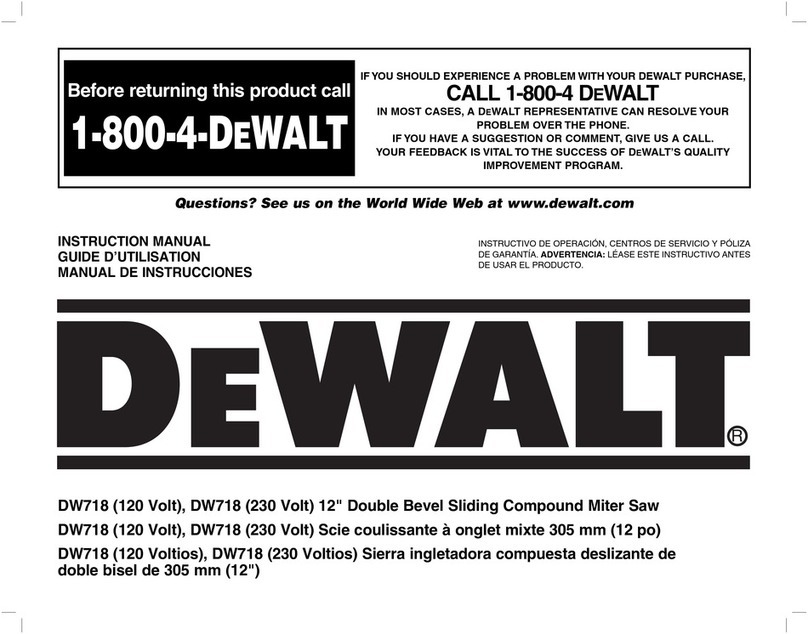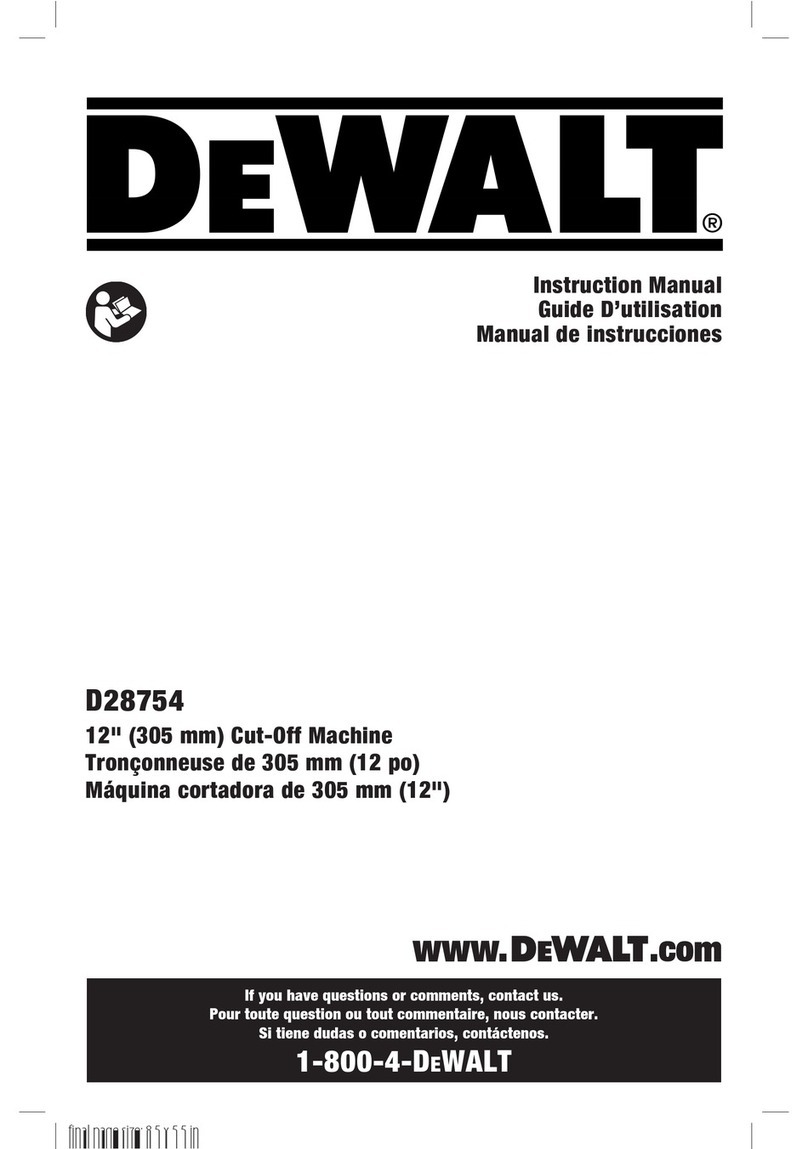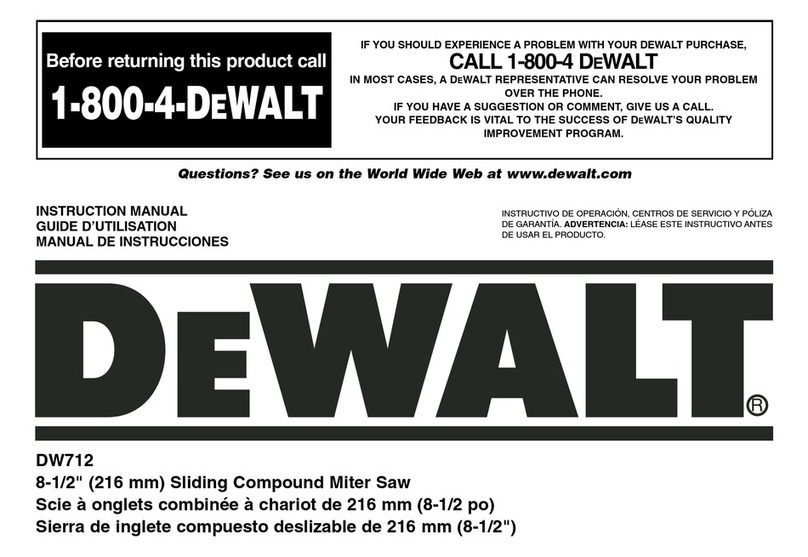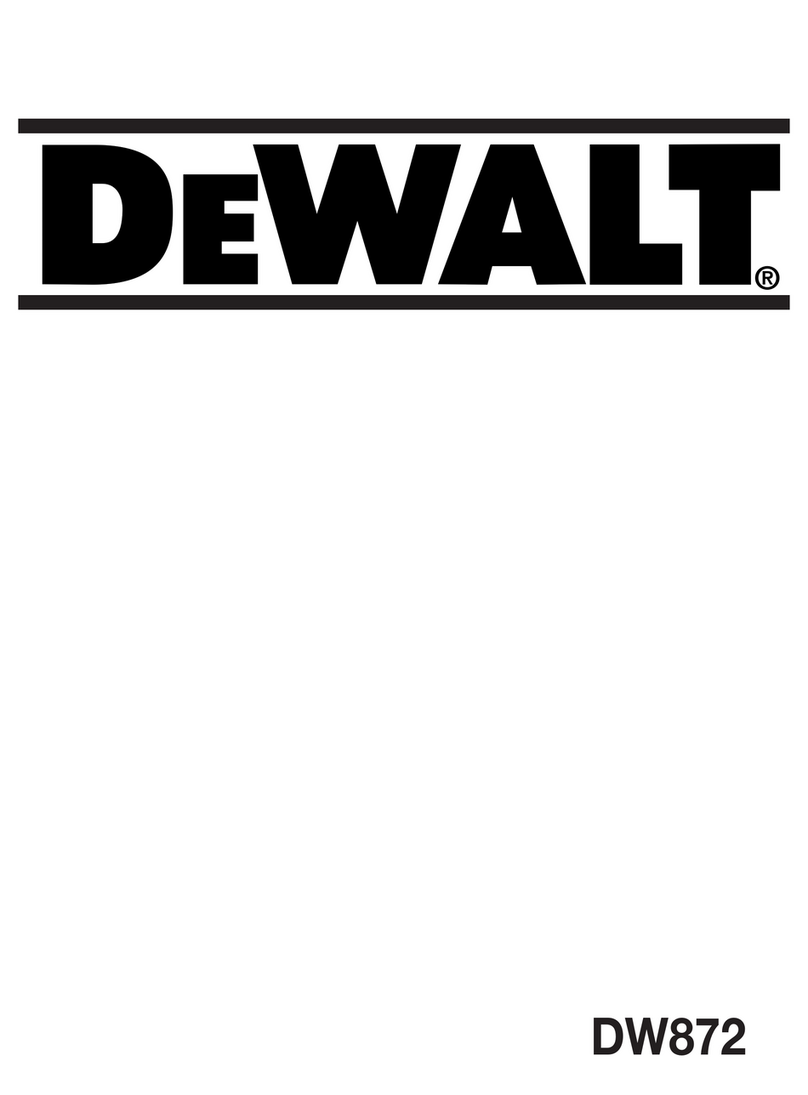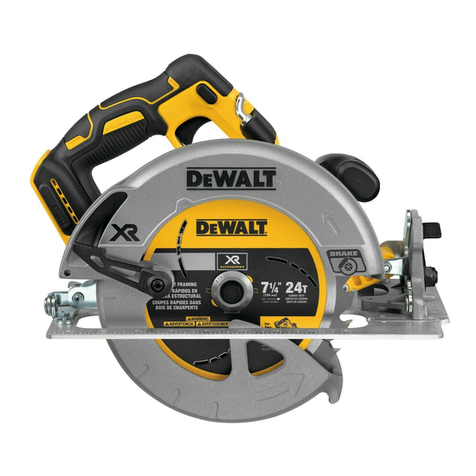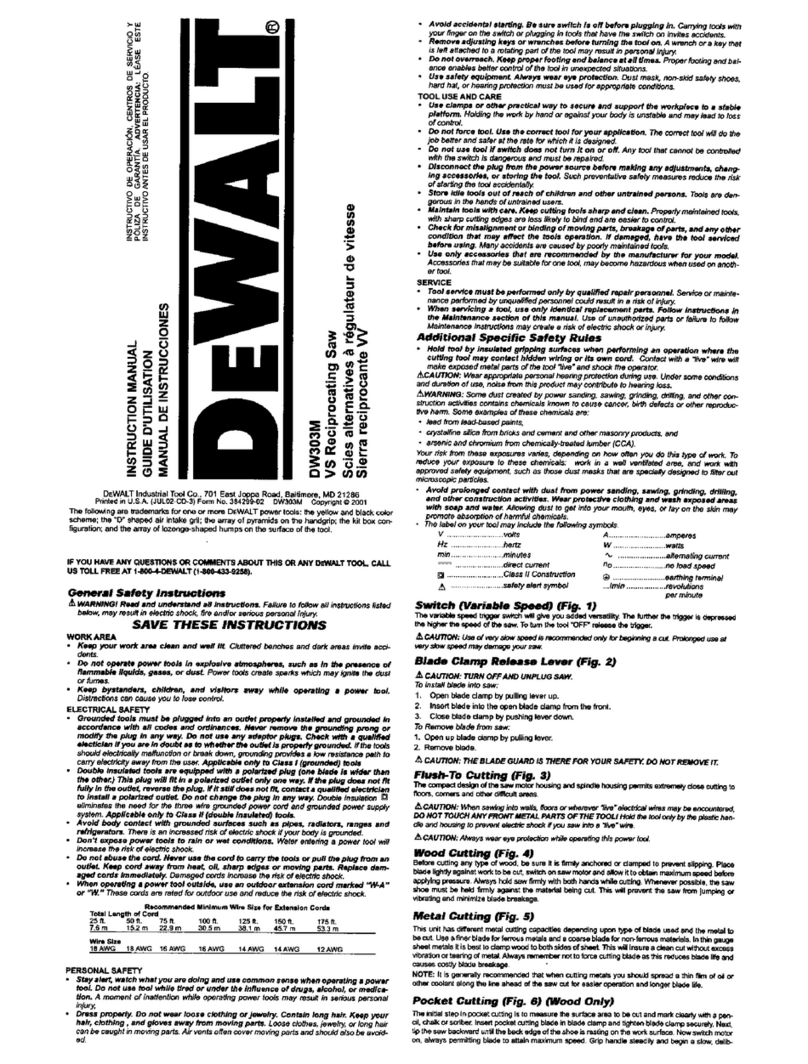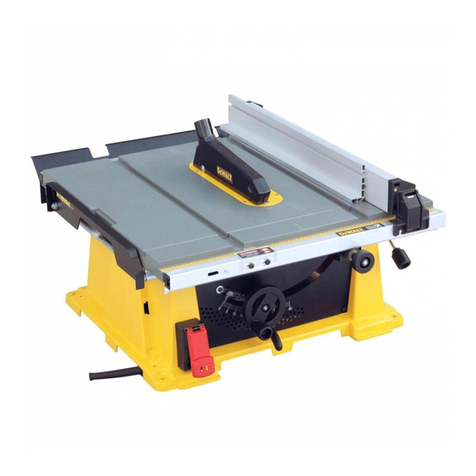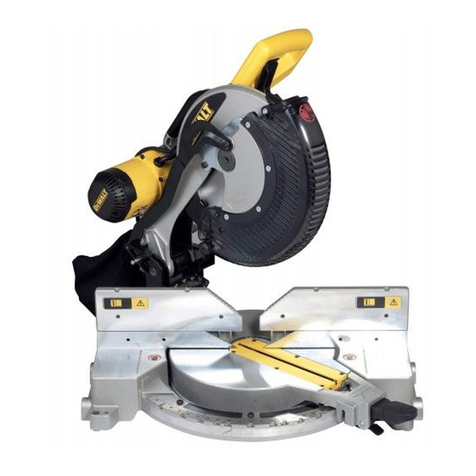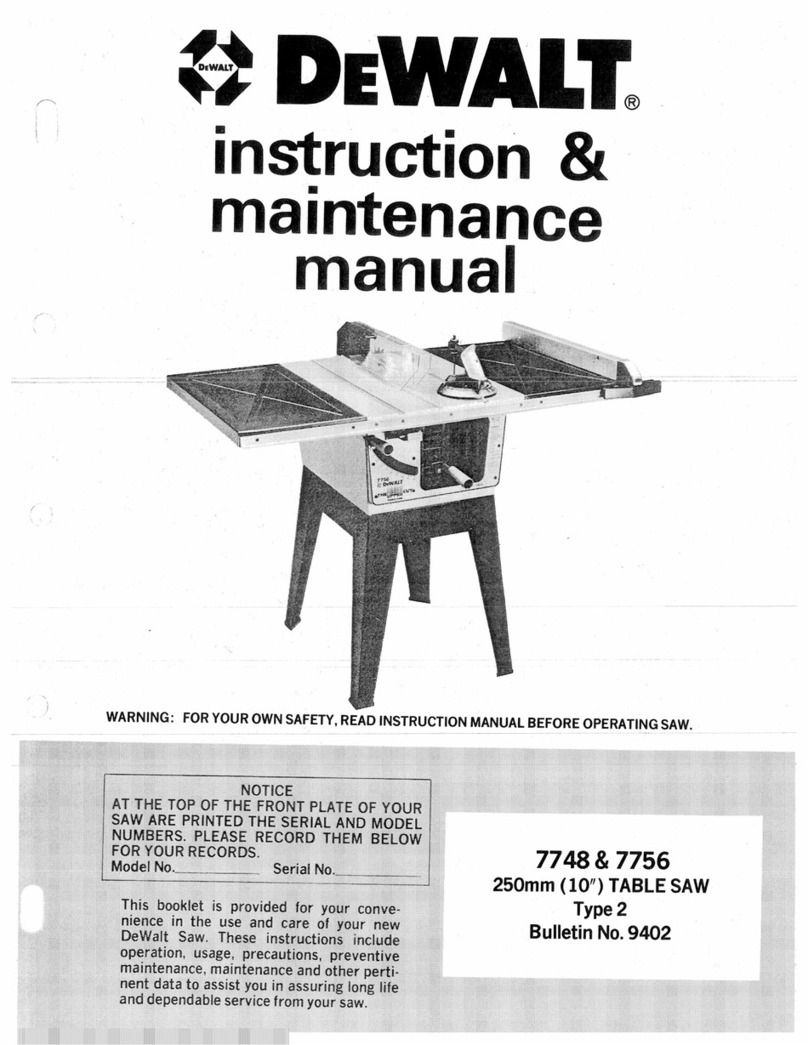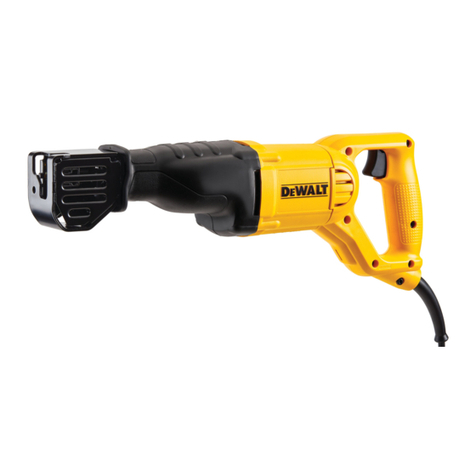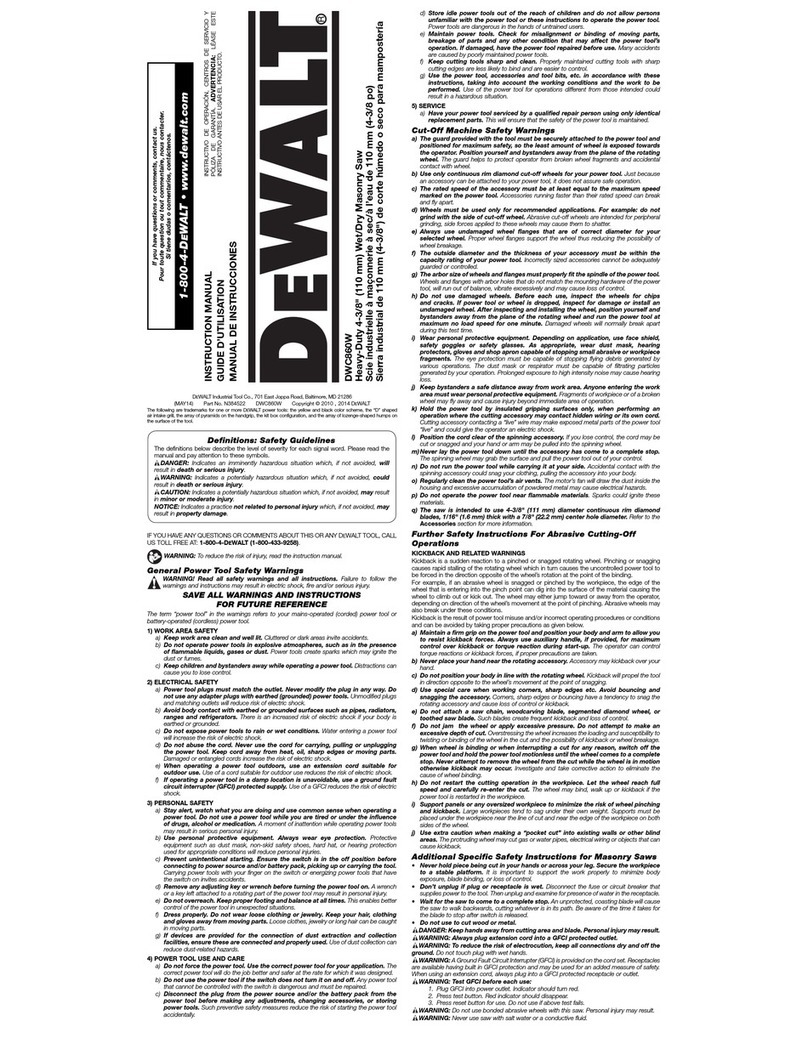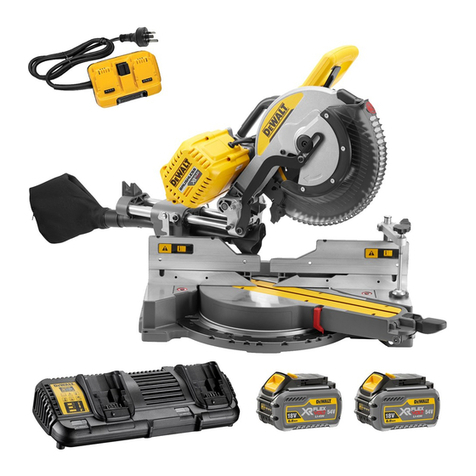8
English
TO REPLACE THE BLADE (FIG. 2, 4, 5)
1. To loosen the blade clamping screw (J), depress the blade lock
(C) and turn the saw spindle with the blade wrench (O), stored
underneath the main handle (B), until the blade lock engages
and the blade stops rotating. With the blade lock engaged,
turn the blade clamping screw counterclockwise with the blade
wrench (screw has right-hand threads and must be turned
counterclockwise to loosen).
2. Remove the blade clamping screw (J) and outer clamp washer (N).
Remove old blade.
3. Clean any sawdust that may have accumulated in the guard or
clamp washer area and check the condition and operation of the
lower blade guard as previously outlined. Do not lubricate this area.
4. Select the proper blade for the application (refer to Recommended
Blade Types under Blades). Always use blades that are the
correct size (diameter) with the proper size and shape center hole
for mounting on the saw spindle. Always assure that the maximum
recommended speed (rpm) on the saw blade meets or exceeds
the speed (rpm) of the saw.
5. Follow steps 1 through 5 under To Install the Blade, making sure
that the blade will rotate in the proper direction.
LOWER BLADE GUARD
WARNING: The lower blade guard is a safety feature which
reduces the risk of serious personal injury. Never use the saw if
the lower guard is missing, damaged, misassembled or not
working properly. Do not rely on the lower blade guard to
protect you under all circumstances. Your safety depends on
following all warnings and precautions as well as proper
operation of the saw. Check lower guard for proper closing
before each use as outlined in Additional Safety Rules for
Circular Saws. If the lower blade guard is missing or not
working properly, have the saw serviced before using. To
assure product safety and reliability, repair, maintenance and
adjustment should be performed by an authorized service
center or other qualified service organization, always using
identical replacement parts.
Cutting Depth Adjustment (Fig. 6–8)
WARNING: To reduce the risk of injury, turn unit off and
disconnect it from power source before installing and removing
accessories, before adjusting or when making repairs. An
accidental start-up can cause injury.
Your saw is equipped with a LOOSEN
TIGHTEN
P
FIG. 6
carbide tipped saw blade for
long life and efficient cutting.
Setting the saw at the proper
cutting depth keeps blade
friction to a minimum, removes
sawdust from between the
blade teeth, results in cooler,
faster sawing and reduces the
chance of kickback.
1. Hold the saw firmly. Raise the FIG. 7
R
Q
P
S
depth adjustment lever (P) to
loosen and move foot plate to
obtain the desired depth of
cut, as shown. Make sure the
depth adjustment lever has
been retightened (lowered)
before operating the saw.
2. Align the appropriate mark on
the depth adjustment strap (R)
with notch (Q) on the upper
blade guard. Your depth is set.

